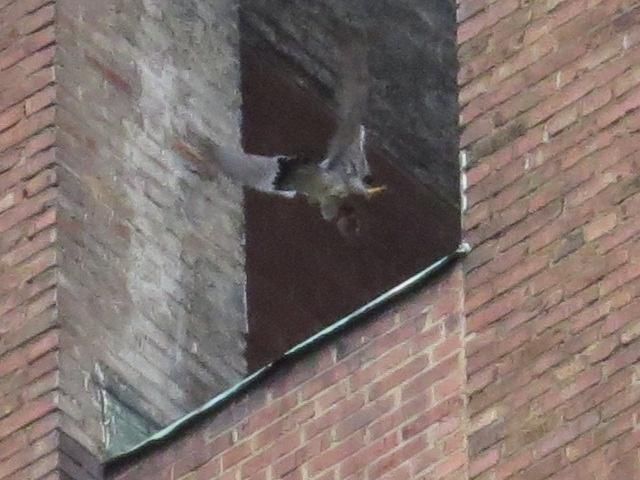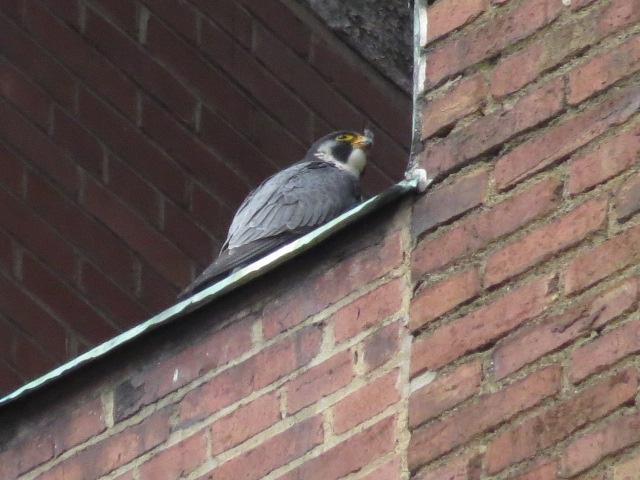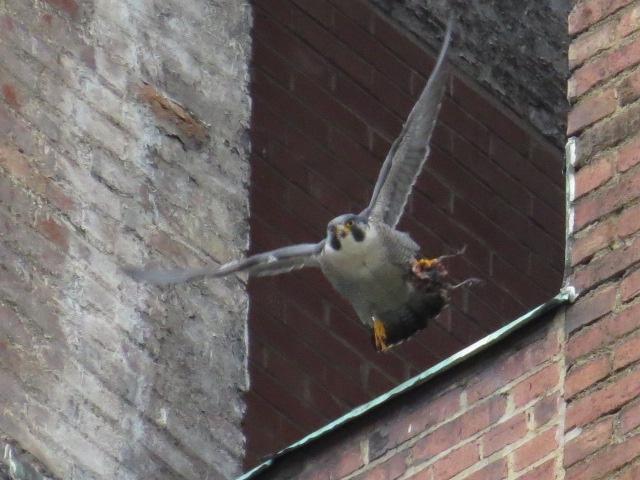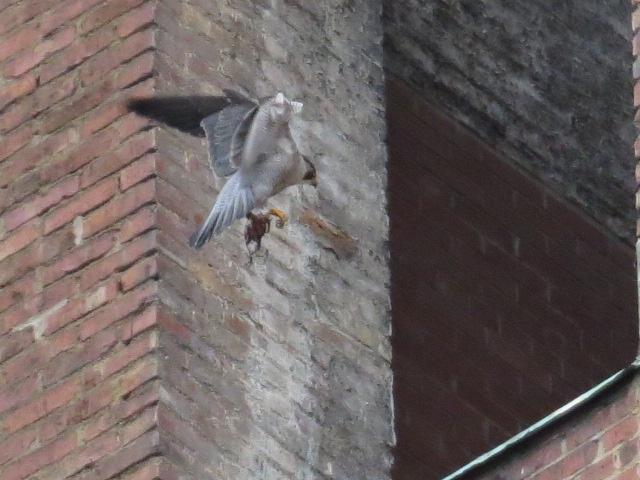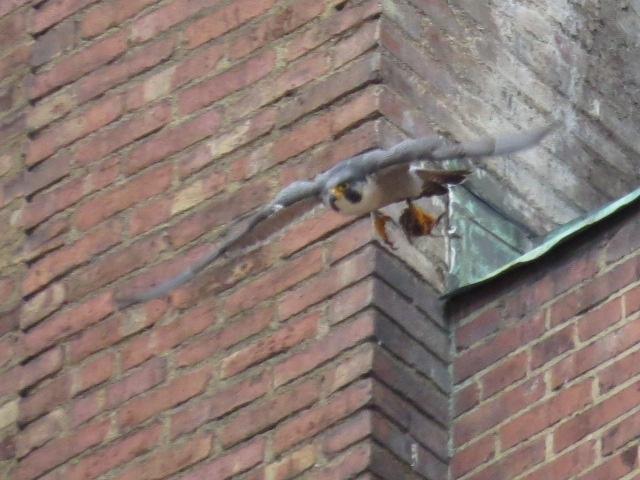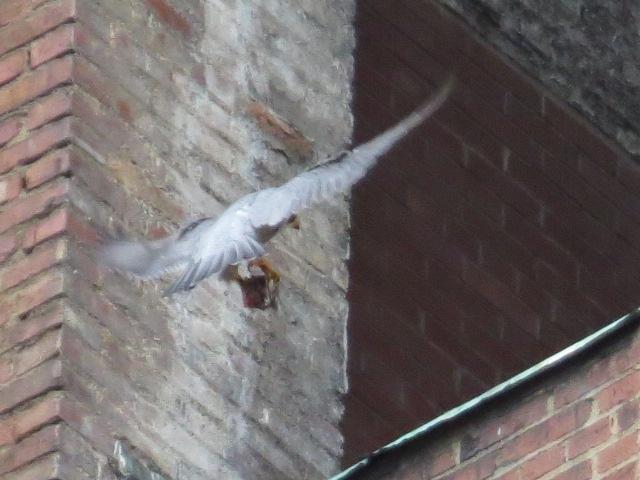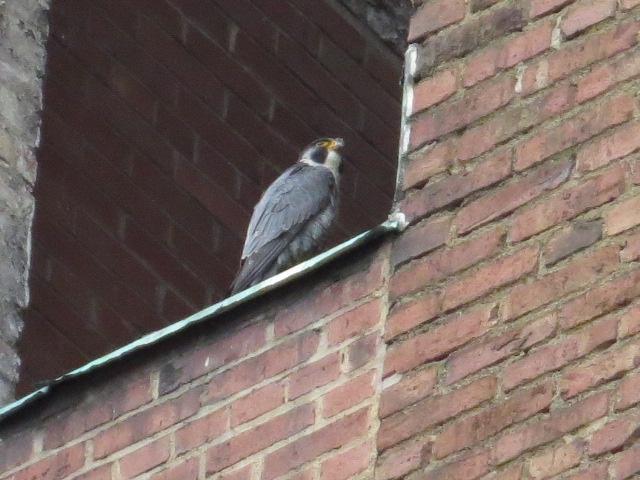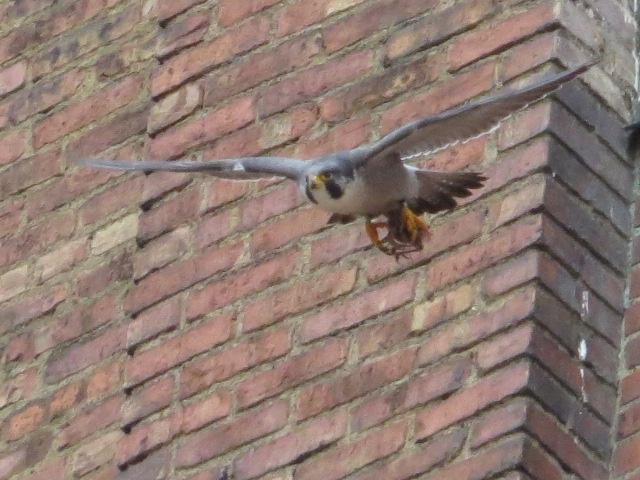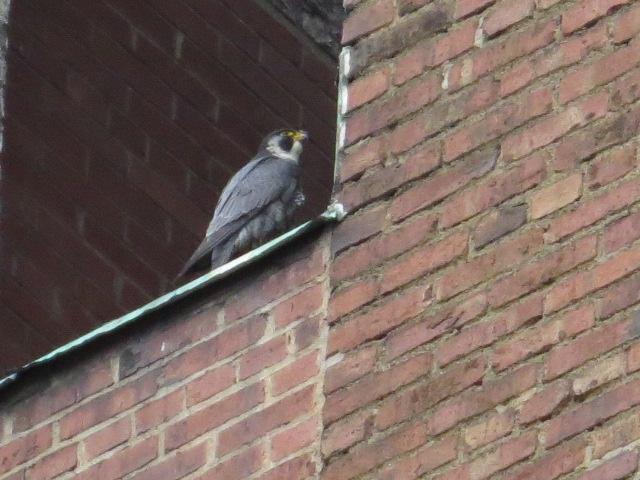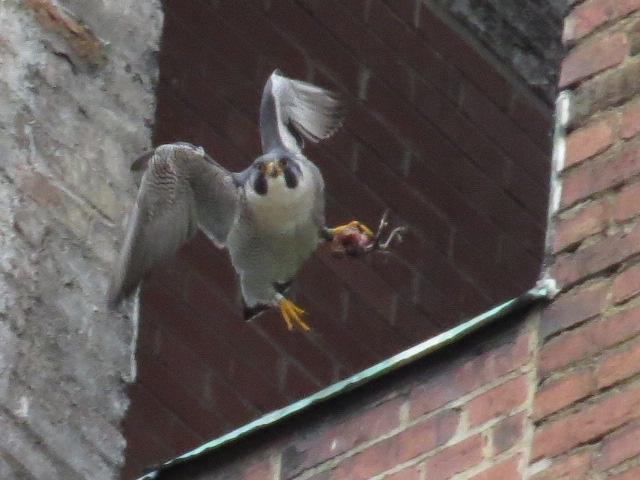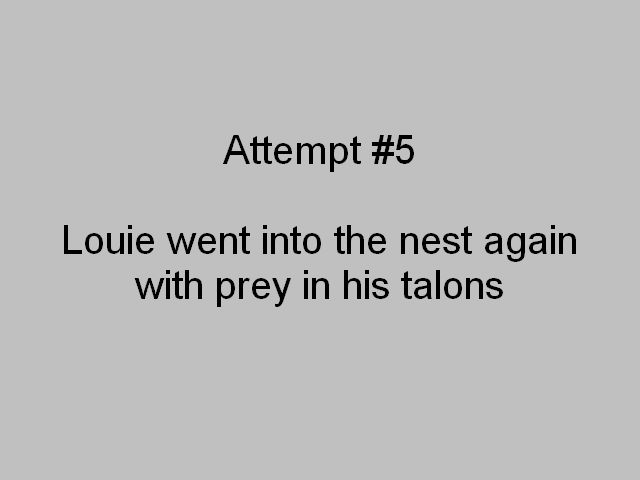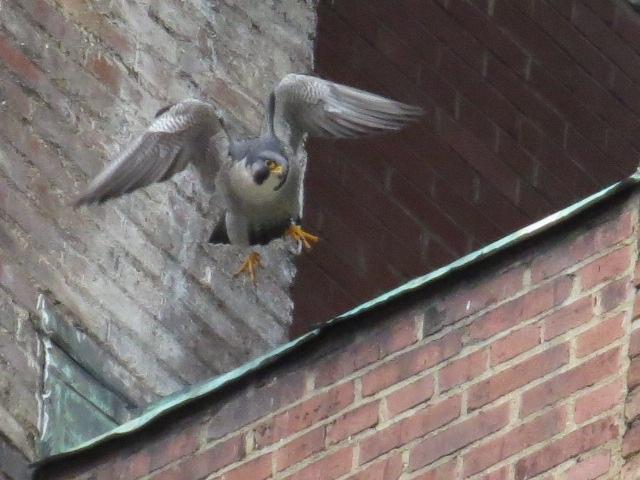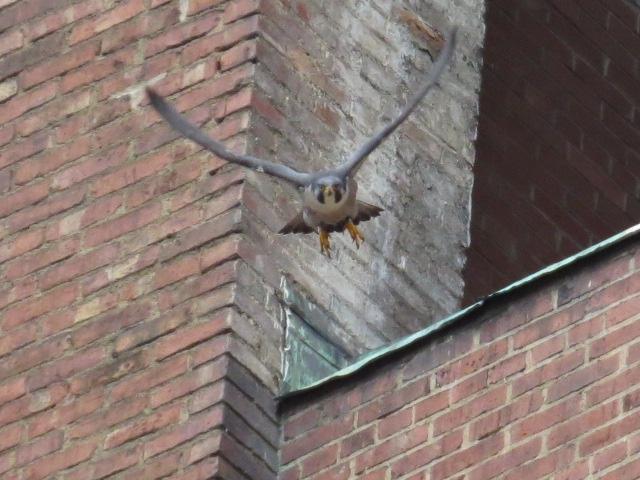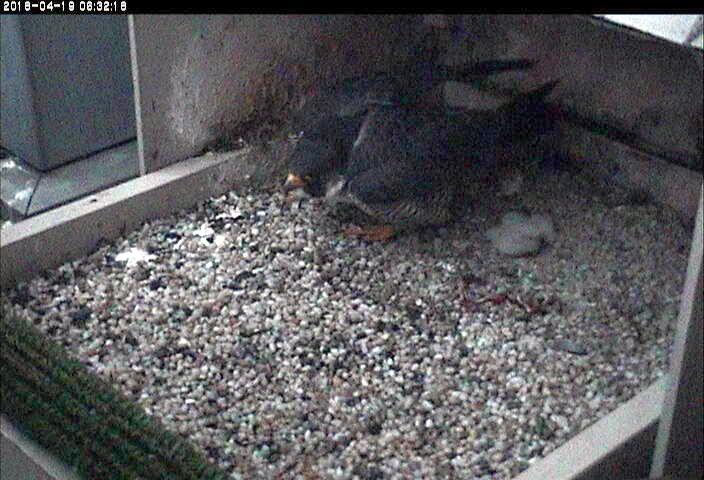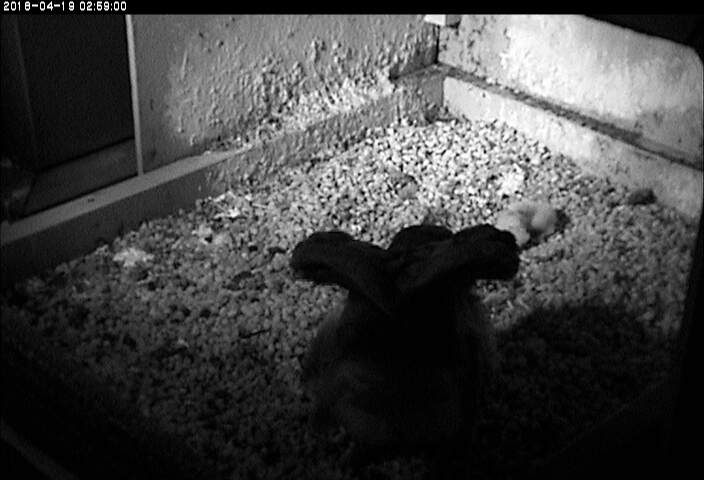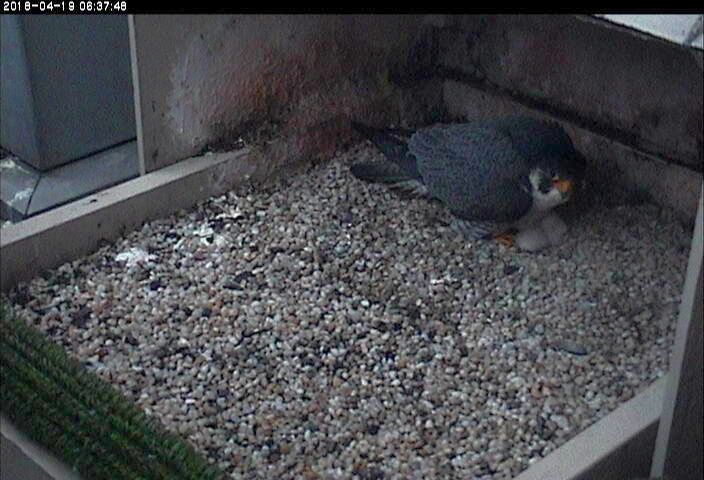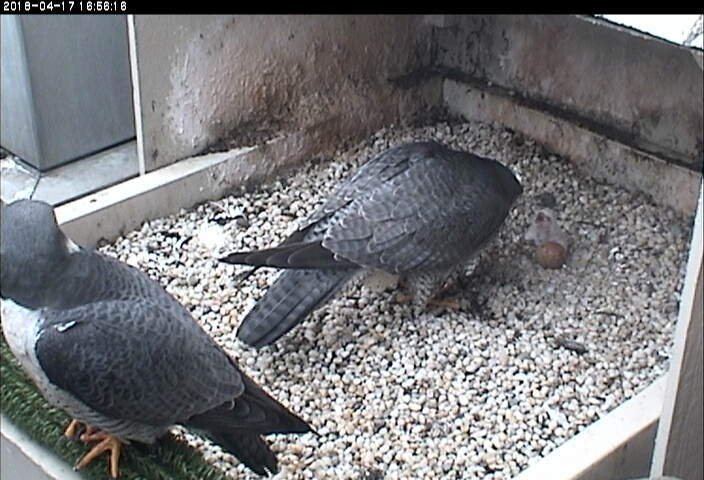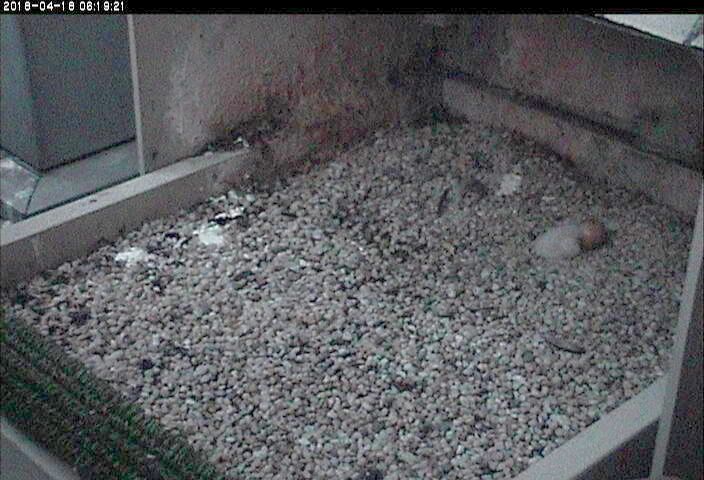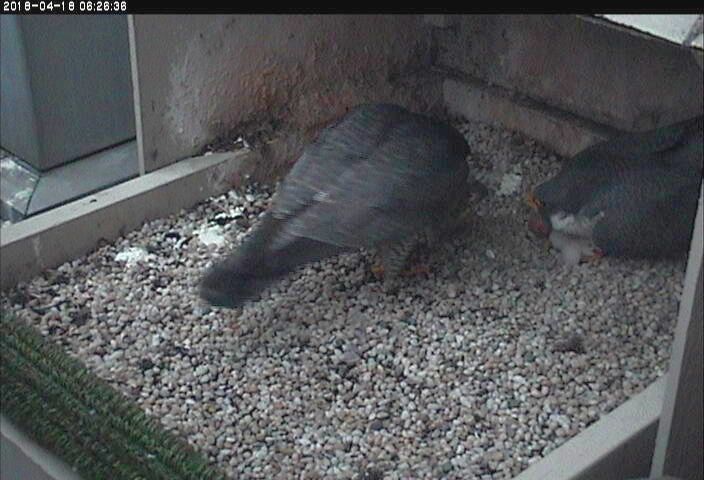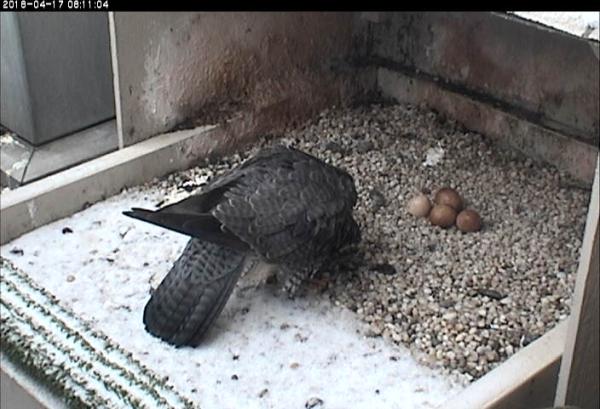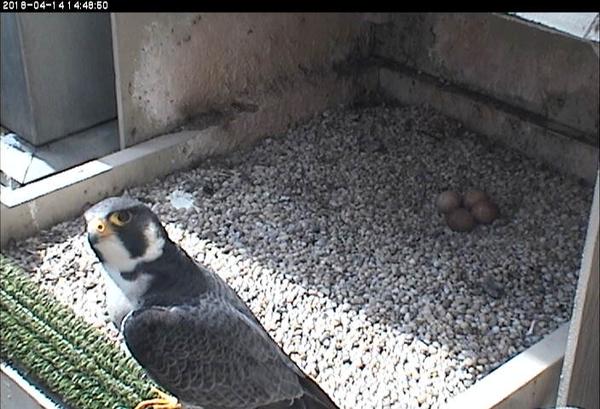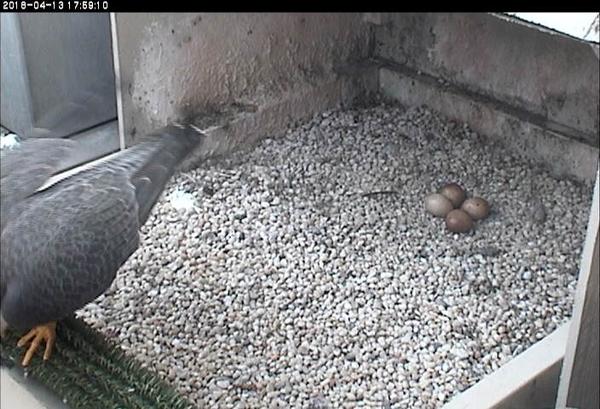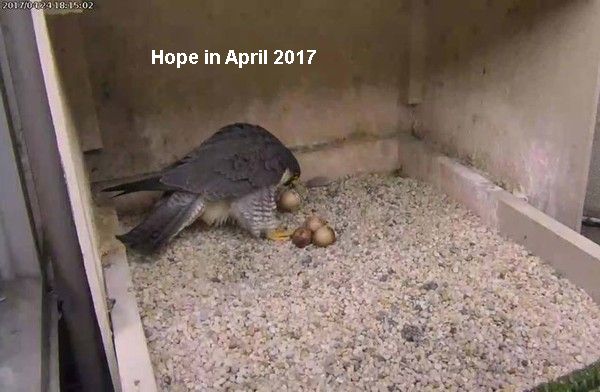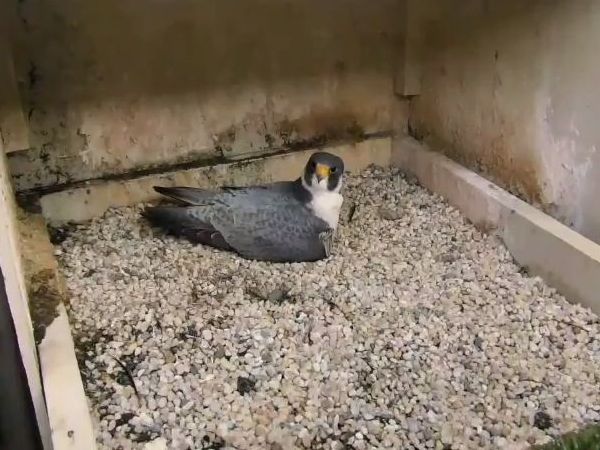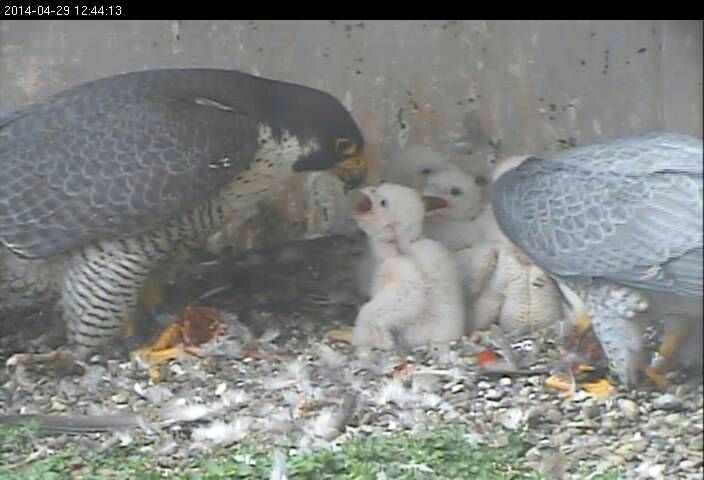
Dori and Louie’s peregrine family in Downtown Pittsburgh will be split up and their four chicks — less than two weeks old — will be permanently taken away from them if the development at Keystone Flats acts on the “taking” permit they have received from U.S. Fish and Wildlife.
In early March Dori laid eggs at her 3rd Avenue nest instead of the Gulf Tower(*). Meanwhile the building below the nest is being renovated by BET Investments. When completed, 319 Third Avenue will become luxury student apartments called Keystone Flats.
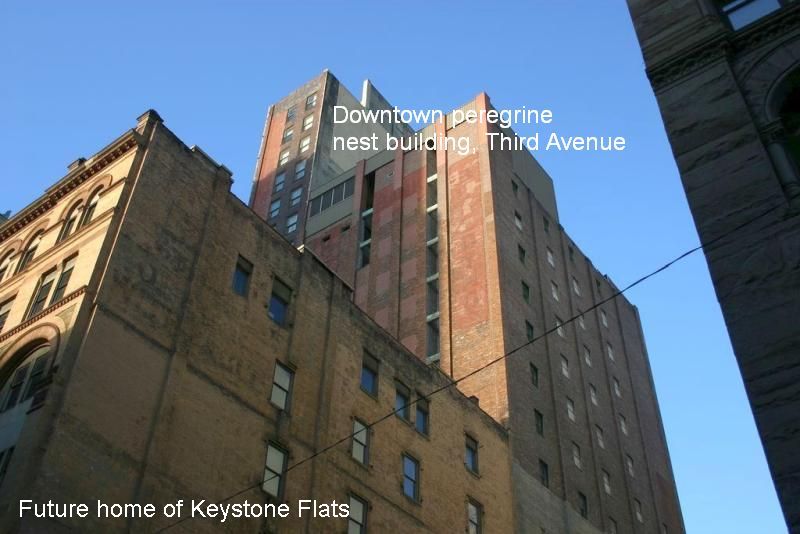
Peregrines defend their eggs and chicks from human intruders by buzzing people who come too close. Dori and Louie buzz the workmen on the Keystone roof. The developer wants the peregrines and their nest to go away so they applied to the Federal government and were granted a permit to remove the chicks. I have learned from the PA Game Commission that the chicks would be raised by a rehabber. (UPDATE on May 2: New information in John Hayes’ article in the Post-Gazette.)
If the developer is willing to wait 30-35 days(**) the nest and the peregrines will go away on their own. By that time the chicks will learn to fly and will leave Third Avenue. Their parents will follow them. Problem solved.
Taking the chicks won’t make the peregrines stop buzzing the site. Peregrines do not “shut off” when their chicks are gone but instead remain where the chicks used to be and continue to attack until their anger and hormones quiet down. This may take weeks or months, depending on the individual birds.
The decision to remove Dori and Louie’s chicks rests on the shoulders of BET Investments. Their project has a permit but they don’t have to act on it. This is their first development in the city of Pittsburgh. They probably don’t realize how much we love our peregrines.
If you want the chicks to remain with their parents, please voice your concerns to the contacts below. Be polite and courteous.
BET Investments
200 Dryden Road, Suite 2000
Dresher, PA 19025
Phone:215-938-7300
Fax:215-938-8651
email: info@betinvestments.com
Facebook: www.facebook.com/betinvestments/ (update on 4/30/2018: this link might not work)
Twitter: twitter.com/betinvestments1
(photo credits: The photo of Dori, Louie and 4 chicks is a stand-in from 2014 when their chicks were the same age as this year’s are now. We don’t have photos of the family this year.
Building photo by Lori Maggio in 2013)
(*) The Third Avenue nest is at the base of an air shaft. To avoid this problem next year, I suggest that in July or August the developer permanently blocks bird access to the air shaft. The peregrines will then nest at the Gulf Tower — or they will choose yet another building.
(**) The chicks will begin leaving around May 29. It will take a few days for all of them to complete the process, as is normal.


